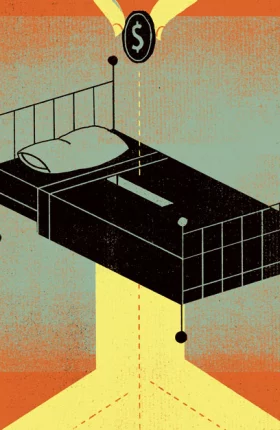Across the U.S., patients with back pain or heart trouble or cancer are being treated for complex medical conditions with little coordination among health care providers and virtually no visibility into how much their treatments will cost—until the bills start to roll in. But the health care industry is in transition, and forward-looking delivery systems have begun to experiment with alternative reimbursement models that empower the consumer. (See “CMS Plans to Mandate Bundles in Orthopedics.”) In the first article in this two-part series, we described how value-based bundles—which integrate all the care involved in a health episode or procedure at a single, comprehensive price—offer an effective approach to meeting consumers’ growing demand for better-coordinated care and transparent pricing. (See “ The Value of Bundles ,” BCG article, September 2014.)
CMS PLANS TO MANDATE BUNDLES IN ORTHOPEDICS
In July 2015, the Centers for Medicare & Medicaid Services (CMS) announced its intention to mandate bundles for hip and knee replacements. Medicare covered more than 400,000 procedures in 2013, and the hospital bills alone cost more than $7 billion. What’s more, quality varies widely across providers of these procedures—the rate of complications after surgery can be more than three times higher at some facilities than at others. By creating a bundled product (called the Comprehensive Care for Joint Replacement), CMS intends to “hold hospitals accountable for the quality of care they deliver to Medicare fee-for-service beneficiaries for hip and knee replacements from surgery through recovery.”
This second article helps providers think tactically about how to get started with value-based bundles by asking the following questions: Are you ready for bundles? That is, do you have the capabilities to design, market, and implement them effectively? Is your market ready for bundles? Can you acquire the patient volume needed to make them worthwhile? We also consider the advantages of moving quickly as bundles become a greater force in the marketplace.
Are You Ready for Bundles?
Many providers are well positioned to offer bundles based on discrete types of care, but the transition involves many moving parts. They need to select the right service lines to be bundled, develop pricing and risk adjustment strategies, reconfigure IT systems, engage consumers, enlist physicians and executives as champions, and effectively market the product to payers, employers, and patients. We have identified several key challenges that must be met before launching value-based bundles.
Find the right products to bundle. To compete from a position of strength, providers must create bundles in service lines where they excel and where there is sufficient consumer demand. We estimate that approximately two-thirds of all clinical services can be bundled effectively, including nearly all outpatient procedures and most nonemergency inpatient care.
The low-hanging fruit are medical conditions for which treatment is elective or highly variable. Elective treatments can drive volume. Unlike patients experiencing an acute medical episode, who must rush to the nearest hospital, those undergoing elective care can be more selective about where they receive treatment, and consumer-driven bundles are highly attractive to patients. Likewise, high levels of unjustified practice variation in the treatment of conditions such as back pain—one physician prescribes rest and ibuprofen, for example, while another conducts invasive surgery—are an indication that a health system is not achieving the level of performance that it could, creating an excellent opportunity for cost savings and improved patient outcomes.
Engage high-performing physicians. Leading physicians must be onboard with bundles that affect their practice area, and bundled-care arrangments must generate enough patient volume to make them worthwhile.
Bundles offer a unique value proposition for physicians. Unlike other alternative payment models (such as pay for performance), which reward improvements in process metrics, bundles reward improved patient outcomes. To ensure sustainable change, patient outcomes must be the main focus, with cost savings a secondary goal. A short-sighted emphasis on lowering costs, without simultaneous improvements in quality, will erode physician engagement and diminish the patient experience.
In addition, physicians need access to benchmarking data to inform their decision making. Today, physicians have little or no insight into how their patients’ outcomes compare with those of comparable patients. With access to relevant, validated, and risk-adjusted outcomes data, physicians can pursue best-practice protocols with proven, highly effective treatments. Risk adjustment is important because results will vary depending on the population treated; for example, a physician who treats mostly frail, elderly patients with co-morbidities will likely see higher rates of mortality and complications than his or her peers, and the data should take such differences into account. By analyzing outcomes, doctors can see what’s working and what’s not working in their treatment of a given medical condition, and this can lead to a step change in quality improvement.
Ensure high quality across the continuum of care. Bundles encourage coordination among primary-care physicians, specialists, surgeons, physical therapists, and other providers along the entire continuum of care. This means that up to 40 percent of value can be captured outside of the inpatient setting, so comprehensively managing pre- and postacute care is critical to reaping the rewards of bundles. Providers therefore need access to a high-quality pre- and postacute-care network that can serve their patients. It may be necessary to obtain exclusive contracts with high performers in a given network in order to meet the guarantee to cover patients’ postacute care.
Bundles Versus PopulATION Health: Two Sides of the Same Coin
As providers move away from traditional fee for service and toward alternative reimbursement models, the path typically points in one of two directions: bundles, which cover discrete episodes of care, or population health, in which the provider assumes full responsibility for the health of a given population.
These two paths are not mutually exclusive. On the contrary, discrete episodic care is an essential component of population health. Few providers are prepared to assume full responsibility for the health of a given patient population, along with full insurance risk; that’s a tall order that requires a fully integrated payer model and the capabilities to win across all service lines. But with episodic risk, providers can start with the service lines in which they already have a competitive advantage. Bundles can provide an effective way to compete as an end in itself. Or they can serve as part of a larger strategy in population health. Over the long term, bundled products are an integral part of a comprehensive, value-based health care strategy.
Secure executive commitment. For health care delivery systems accustomed to the fee-for-service model, bundles present some new challenges. Hospital executives need to establish partnerships with postacute providers to ensure that patients receive high-quality treatment over their entire episode of care. They also need to attract and recruit employers willing to sign up for bundled products. Finally, executives must consider whether bundles will be an end point or an intermediate stage on the road to a more aggressive move in population health. (See “Bundles Versus Population Health: Two Sides of the Same Coin.”) Lack of alignment on objectives or a reluctance to make tough decisions should raise a red flag.
Is Your Market Ready for Bundles?
In our work with large, regional health care providers, BCG uses a proprietary model to identify which employers in a given market will be most amenable to bundles. The model takes into account several key factors:
- History of innovation in care and payment models
- Average employee salary
- Prevalence of the conditions addressed by the provider’s bundles
- Employer status (self-insured or insured)
A thorough analysis of these and other factors will indicate which employers are most likely to become early adopters of bundled products and whether a given market is more likely to evolve quickly or slowly.
How Much Volume Is Enough?
A significant upfront investment is required to implement bundles. So it’s only natural to wonder, When do you break even?
Bundles will only succeed if employers and payers want to adopt them. For large health systems, providers need to have at least 5 to 10 percent of their patients in bundled-care arrangements to break even within one year. That amounts to approximately one large employer contract. Smaller systems need to attract a larger number—approximately 10 to 15 percent of patients—to make the economics work.
But share shift—a change in the volume of patients a provider cares for within a given market—changes those numbers in a hurry. Within any given bundle, new patients contribute approximately ten times more incremental profit than existing patients, and this holds true for all health systems no matter the size. So if providers use bundles as a strategy to attract new payers and employers, only a small increase in volume is needed to become profitable. Even small systems with relatively few patients can benefit from bundles if they maximize share shift. In short, providers don’t necessarily need a lot of volume; they need the right volume.
The First-Mover Advantage
As bundles continue to gain traction, innovative health systems are faced with a difficult choice: whether to be an early adopter or a second mover. Providers that mobilize quickly will gain a meaningful competitive advantage. For one thing, bundles entail a steep learning curve. It takes time and investment to redesign care, build and deploy products, and establish a comprehensive administrative and IT capability. But once the bundles are up and running, providers can optimize processes, refine risk adjustment models, and analyze outcomes data to continuously assess and improve their effectiveness. They can also scale up rapidly.
Providers that fail to act will, at the very least, miss out on promising growth opportunities. Others will lose ground as competitors partner with major payers and employers—particularly given that these contracts come with significant switching costs. Recent moves by major players suggest that the time to act is now.
Win-win scenarios are exceedingly rare in the U.S. health care system, partly owing to the perverse incentives of the fee-for-service model. But value-based bundling offers a clear exception to the rule. Hospitals, physicians, payers, employers, and patients all stand to benefit. Leading providers have already established innovative partnerships with payers, created centers of excellence to serve employers, and provided much-needed transparency in pricing for patients. Tomorrow’s winners will be those that are best at identifying and anticipating market dynamics, fluidly mobilizing people and organizational resources, and experimenting boldly.








